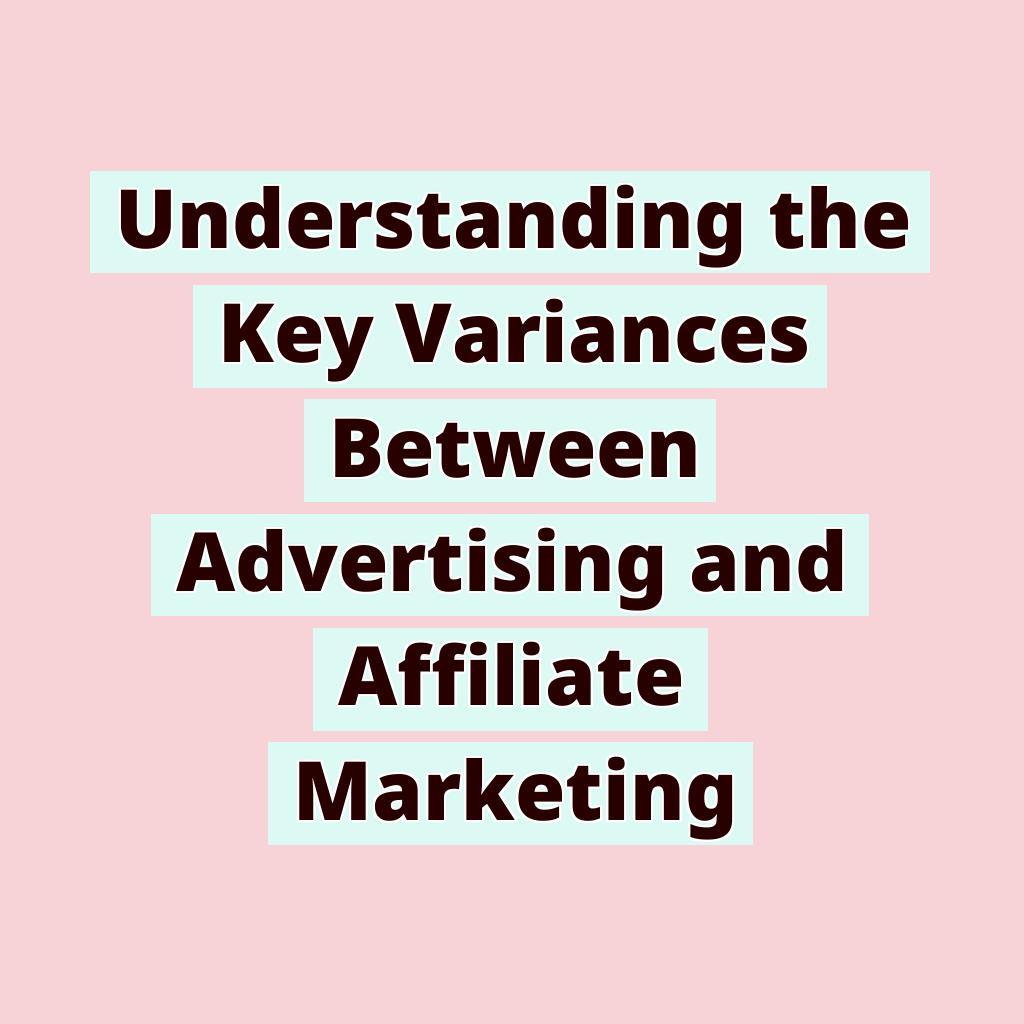In the digital marketing world, two popular methods that brands often utilize to promote their products and services are advertising and affiliate marketing. While both aim to drive revenue and increase brand awareness, they operate in distinct ways. Understanding the key variances between advertising and affiliate marketing is crucial for businesses looking to optimize their marketing strategies.
What is Advertising?
Advertising involves paying for space or time on a platform to promote a product or service. It is a paid form of marketing that allows businesses to reach a specific audience through various channels such as TV commercials, print ads, social media, and online banners. The goal of advertising is to create brand awareness, generate leads, and drive sales.
Advertising is a direct approach to marketing, where businesses have full control over the message, design, and placement of their ads. They pay a set price for the ad space, regardless of the performance of the campaign. This traditional form of marketing has been around for decades and is well-known for its ability to reach a large audience quickly.
What is Affiliate Marketing?
On the other hand, affiliate marketing is a performance-based strategy where businesses collaborate with affiliates to promote their products or services. Affiliates, also known as publishers or partners, promote the products through unique tracking links or coupon codes. They earn a commission for every sale or lead that is generated through their affiliate link.
Affiliate marketing relies on partnerships with individuals or organizations that have an existing audience or customer base. It is a cost-effective method for businesses as they only pay the affiliate when a desired action is completed. This model incentivizes affiliates to drive quality traffic and leads to the business, as their earnings are directly tied to their performance.
Variances Between Advertising and Affiliate Marketing
-
Payment Structure
- Advertising: Businesses pay a set price for ad space, regardless of the campaign’s performance.
- Affiliate Marketing: Affiliates earn a commission for each sale or lead they generate through their referral.
-
Control Over Message
- Advertising: Businesses have full control over the ad design, message, and placement.
- Affiliate Marketing: Affiliates promote products using their own unique strategies and content.
-
Audience Reach
- Advertising: Reaches a broad audience based on the chosen advertising channels.
- Affiliate Marketing: Relies on affiliates’ existing audience or customer base for promotion.
-
Cost-Effectiveness
- Advertising: Can be costly, especially for premium ad placements.
- Affiliate Marketing: Cost-effective as businesses only pay for actual results.
-
Risk
- Advertising: Businesses bear the risk of potentially not generating a positive ROI.
- Affiliate Marketing: Performance-based, minimizing the risk for businesses.
Which Strategy is Right for You?
Deciding between advertising and affiliate marketing depends on your marketing goals, budget, and target audience. If you are looking to create brand awareness on a large scale and have the budget for it, traditional advertising may be the way to go. On the other hand, if you want a cost-effective method that drives performance-based results, affiliate marketing could be the better choice.
Both advertising and affiliate marketing have their advantages and can be effective in different scenarios. By understanding the key variances between the two strategies, you can make an informed decision on which approach aligns best with your business objectives.
The Bottom Line
In conclusion, advertising and affiliate marketing are two distinct marketing strategies that businesses can leverage to promote their products and services. While advertising offers control over the message and broad audience reach, affiliate marketing provides a performance-based, cost-effective solution through partnerships with affiliates. By recognizing the differences between these methods, businesses can tailor their marketing efforts to maximize results and achieve their objectives in a competitive digital landscape.
